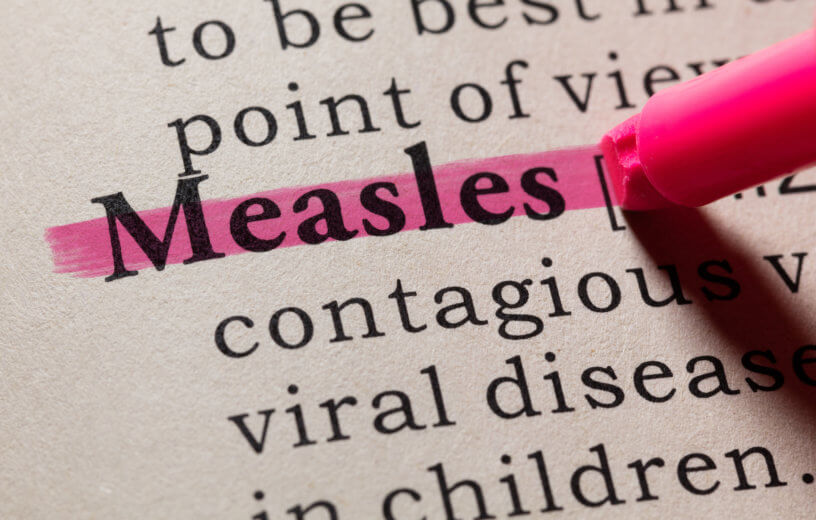GENEVA, Switzerland — As the world recovers from the COVID-19 pandemic, another viral threat appears to be returning — measles. The highly contagious childhood disease, once thought to be virtually eradicated thanks to vaccines, is now staging a troubling resurgence in many countries.
At this year’s European Society of Clinical Microbiology and Infectious Diseases Global Congress in Spain, leading experts sounded the alarm about the growing number and size of measles outbreaks worldwide. Dr. Patrick O’Connor, from the World Health Organization headquarters in Switzerland, provided a sobering assessment of the current global measles landscape.
According to Dr. O’Connor, the total measles cases reported so far in 2024 are on track to match or exceed the 321,582 provisional cases tallied in 2023. While reporting delays mean the true 2024 figure is likely much higher than the 94,481 cases counted as of early April, it’s clear the trend is moving in the wrong direction. Concerningly, those 321,582 measles cases in 2023 were nearly double the number recorded in 2022 (171,153).
Nearly half of this year’s cases have occurred in the WHO European Region, with countries like Yemen, Azerbaijan, and Kyrgyzstan posting the highest measles incidence rates globally. Researchers are concerned as the number of countries grappling with large or disruptive outbreaks — defined as 20 cases per million people sustained over 12 months — has tripled from 17 to 51 in the span of a year.
“Over the last decade there has been significant progress towards measles and rubella elimination — the Regional Verification Commissions for Measles and Rubella Elimination (RVCs) from all of the WHO Regions will review all national measles and rubella 2023 reports in 2024,” says Dr. O’Connor in a media release. “Large outbreak and continuous transmissions of measles are always a concern and can making achieving and maintaining elimination challenging.”
Vaccination is the key to stopping measles in its tracks, as the virus spreads readily among unprotected individuals.
“The measles virus is extremely infectious and any gaps in immunization coverage are potential risk for outbreak. So, coverage needs to high but also uniform and equitable,” explains Dr. O’Connor.
Hanna Nohynek, a professor from the Finnish Institute for Health and Welfare in Helsinki, notes that global measles cases were already climbing in 2019, particularly in Africa, where vaccine coverage is lowest. The COVID-19 pandemic temporarily slowed the spread of measles and other respiratory viruses by reducing human contact. However, it also disrupted routine childhood vaccinations, leaving many youngsters unprotected.
“During the pandemic, many children remained unvaccinated, and catchup vaccinations have not reached them. Therefore we now see cases increasing again in various regions of the world,” says Nohynek.

Despite the current challenges, measles vaccination has been a public health success story, albeit an unfinished one. Dr. O’Connor estimates that immunization against measles averted approximately 57 million deaths worldwide between 2000 and 2022. In the WHO European region alone, annual measles fatalities plummeted by 98 percent from 3,584 in 2000 to just 70 in 2022.
“Over the last 20 years, there has been significant progress toward achieving measles and rubella elimination,” says Dr. O’Connor. “In order to solidify and maintain those gains, we need to ensure high, uniform and equitable routine immunization coverage; and robust outreach and rapid outbreak response.”
Nohynek points to the successful elimination of measles from the WHO Region of the Americas in 2016 as a model to emulate. The winning strategy involved a combination of one-time national catch-up campaigns for children, strengthening routine vaccination to consistently reach 95 percent coverage and periodic follow-up doses. Political will, robust health infrastructure, and public trust in vaccines were also key ingredients.
By contrast, global coverage with the first dose of measles vaccine slipped to 83 percent in 2022, three percent below pre-pandemic levels and well under the 95 percent threshold needed to prevent outbreaks. A staggering 33 million children missed out on measles shots they should have received.
To get back on track, countries must identify and tackle the root causes of falling vaccine coverage, such as access barriers, logistical challenges, and hesitancy, says Nohynek. Innovative approaches like needle-free microarray vaccine patches could also help close immunization gaps.
With measles poised to rebound, the stakes couldn’t be higher. Projections show that measles vaccination will prevent 75 percent of all vaccine-preventable childhood deaths between 2021 and 2030 at a fraction of the cost of other interventions. As the world rallies to contain measles and protect hard-fought progress, experts agree that the time to act is now.
StudyFinds’ Matt Higgins contributed to this report.
